SBB

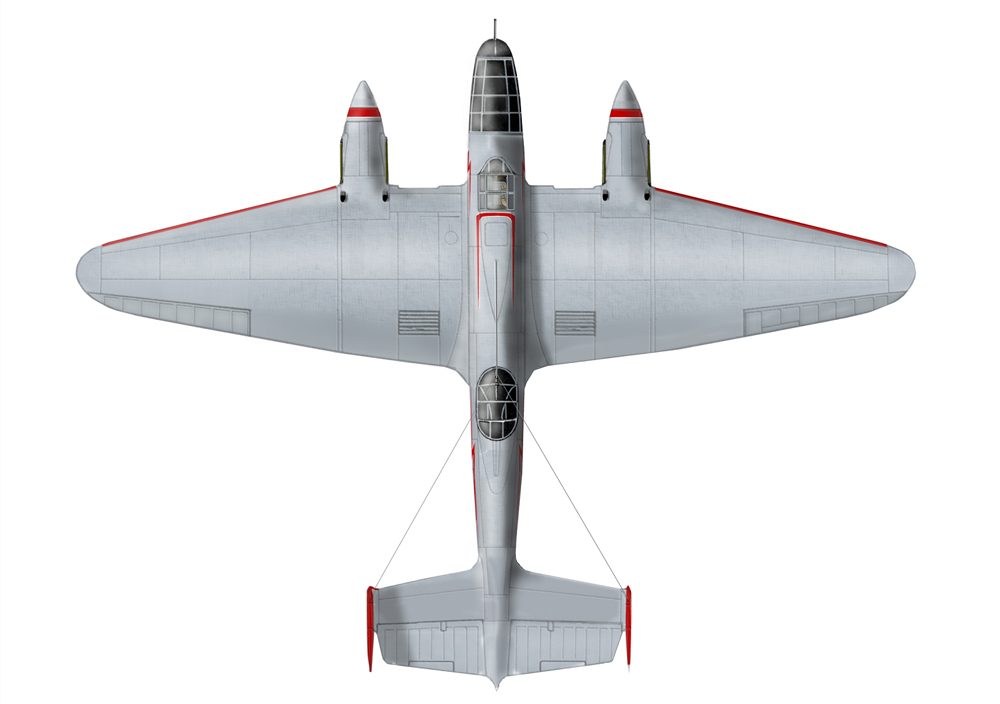
In 1939 the design bureau led by Archangelskiy started to study a radical reprojectation of the SB to achieve a much higher speed to compete with Polikarpov's new SPB bomber. The plane was intended for close support of ground troops and called Skorostnoj Bliznyj Bombardirowszczik (fast short-range bomber) abbreviated SBB-1.
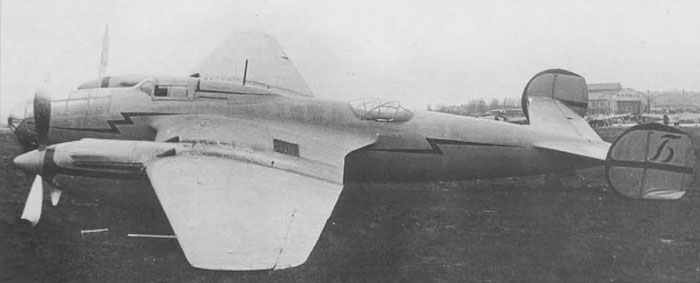
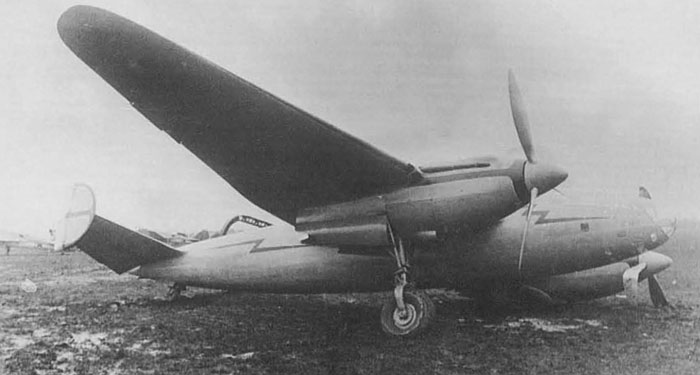
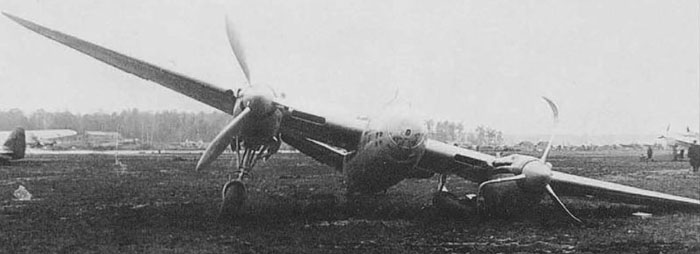
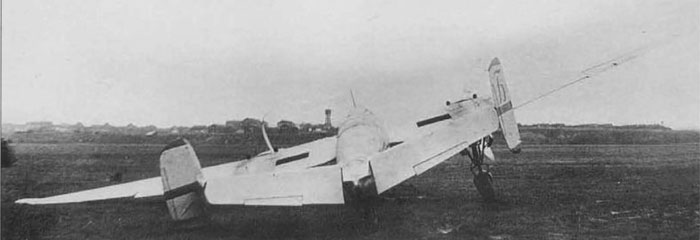
The final version of the preliminary project was referred as B, and approved on 11 November 1939. When compared to Ar-2, the SBB had :
- improved aerodynamics, particularly the nose;
- a modified wing construction with decreased span from 18.50m of Ar-2 to 16.00 m, also using a special kind of plywood ("balenit") for to provide better surface quality and save duraluminium; the wing area was reduced from 48.20 sm of Ar-2 to 46.00 sm;
- the water radiators were mounted between the spars in the wing centre section; the air outlet was on the wing uppersurface;
- a new streamlined nose with greater glazing for the navigator;
- a new fuselage back between the pilot's and rear gunner's cabins;
- the internal structures were made with open profiles as U instead of tubes because they were easier to build and repair.
- a retractable tailwheel;
- the armament of two 7.62 mm ShKAS only, one in navigator's position on the nose, the other one in dorsal position; none ventral gun was installed;
- double vertical fins were installed to improve the rearward shooting position;
- a new closed rear gun position;
- it could carry 600 kgs of bombs in the bomb bay as a normal load, while the max bomb load was 1000 kg (800 in the bomb bay and 200 under the wingroots); this was a regress when compared with 1500 kg of Ar-2. It was projected with dive bombing capability, even if the few photos available don't show any air brake under the wing.
For some time it was considered to invert the M-105TK-2 engines to make them as on the Me-109s, but this innovation was deemed not necessary and abandoned.
The plane, equipped with M-105s with turbochargers, was expected to reach a speed of 612 km/h at an altitude of 9000 m , while a version with M-106 engines without superchargers was expect to reach 587 km/h at 7000 m.
On 4 March 1940 the construction of two prototypes was decided, designated B-1 (an high speed bomber) and B-2. (a dive bomber, with a larger fuselage).
Left: photos of the plane B (or B-1) after the rupture of the landing gear while taxiing on 26 November 1940.
Surprisingly, the final part of the engine nacelle looks open as on SB, instead of closed as on Ar-2.
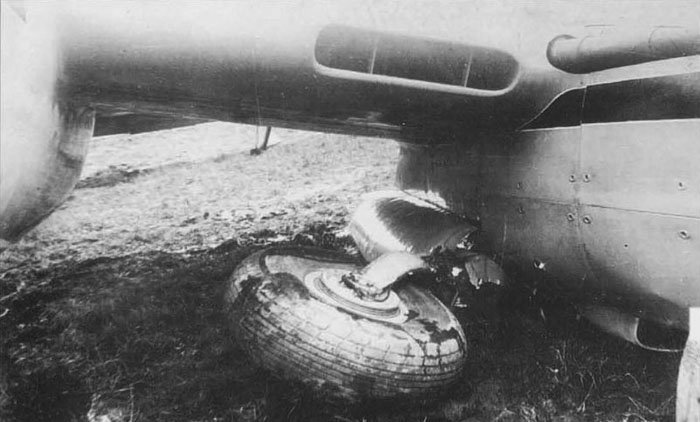
The B-1 prototype was built at Factory n.156 and completed in September 1940.
Before this first flight, a special commission of experts from TsAGI
(Central Aero-Hydrodynamical Institute), VVS (Air Force of the USSR)
and NKAP (People´s Commissariat of Aircraft Industry) performed
a tactical-technical comparison between PB-100 of Petlyakov (Pe-2 prototype),
BB-22PB (Yak-4) of Yakovlev and SBB of Arkhangelsky, for the choice
of the future standard medium bomber. The SPB of Polikarpov was abandoned
because of problems of flutter on its tail.
Arkhangelsky´s SBB was not taken into account, because at that
date it had not performed any factory tests.
The first flight was made at Moscow's Central airfield on 6 November 1940. SBB achieved 540 km/h at 4.900 m and climbed to an altitude of 5.000 m in 6 min. 21 s. Indeed, the performances were lower than planned.
After 9 flights, it was conducted in the airport of Factory 22 at Fili. On 26 November, the landing gear broke during taxiing, due to a design error.

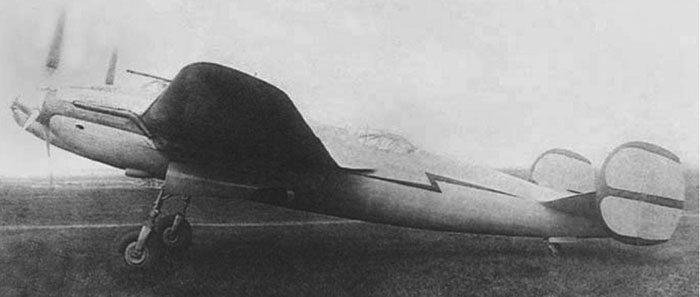
The plane was repaired, and some slight construction defects were removed ( including improving of the undercarriage doors and the ejector exhaust tubes) so it flew again in late December, reaching a speed of 570 km/h, higher than the Pe-2.
In comparison with Petlyakov´s PB-100 (Pe-2), the SBB had better starting and landing characteristics and climbed faster. It was recommanded for series production by the test pilot, after troubleshooting.
However it was too late: the Pe-2 was fully satisfying, better armed and already in production.
The B-1 continued tests and improvements up to late 1941, but the interest was lost and the project was abandoned.
It is not clear if a second prototype, sometimes mentioned as B-2, was built during the summer of 1941. The machine was planned to serve as a dive bomber.
Left:
B-1 with a modified livery and exhaust stacks, probably photographed after the repairs in December 1940. the inscription B on the tail is no longer there. The final part of the nacelle looks closed, while it looks open on the photos of the plane after the accident; this could be one the improvement that raised its speed.
Below: profile of SBB with modified exhausts and nacelles
